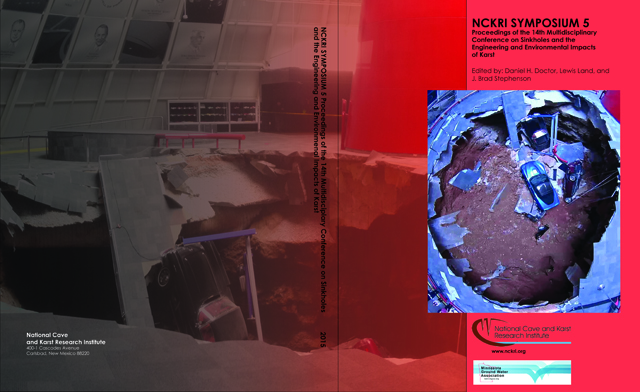Abstract
The US Army required construction of a 2,787.1 square meters (30,000 sf) maintenance facility supported on shallow foundations at the Fort Campbell Military Installation. During the subsurface investigation a seven foot air-filled void was encountered in the bedrock within the building footprint. Electrical Resistivity Imaging (ERI) was conducted in an attempt to determine the lateral extent of the encountered void and to establish the general prevalence of karst features at the site. Due to uncertainty in the subsurface conditions, a rock treatment and soil modification program was developed which consisted of a series of targeted exploratory grout holes advanced in 126 locations in the structural areas of the building footprint. The intent of the program was not to prevent the development of a soil dropout, but to improve the foundation support of the structure so that the facility would perform acceptably if a future soil dropout were to occur during the design life of the facility. This was achieved by targeting each footing with 3 exploratory grout holes. The intent of each grout injection was 1) to identify the top of rock elevation, 2) determine if a karst feature existed, 3) cap the karst bedrock below the footing and treat defects in the rock, and 4) provide localized improvement of soft soils through the use of low mobility grout columns under each footing. Drilling refusal elevations were obtained for every grout hole and were assumed to represent the top of bedrock. Each exploratory hole was closely monitored for pressure and volume in 0.61 meter (2-foot) stages. Zones where the bedrock had lower elevations or took excessive grout at low pressures were targeted with additional tertiary holes. The tertiary holes were verified with additional SPT sampling. Documented ground improvement was achieved, evident by increased SPT blow counts ranging between 25 to 50+ post treatment. Based on results from this program, lower grouting pressures could have been utilized as part of the refusal criteria to successfully identify and treat karst features.
Rights Information
DOI
http://dx.doi.org/10.5038/9780991000951.1070
Included in
Engineering Science and Materials Commons, Geology Commons, Geophysics and Seismology Commons, Geotechnical Engineering Commons, Materials Science and Engineering Commons, Structural Engineering Commons
Pre-Construction Rock Treatment and Soil Modification Program Using Low Mobility Grout to Mitigate Future Sinkhole Development in A 2,787.1 Square Meter (30,000 SF) Maintenance Facility
The US Army required construction of a 2,787.1 square meters (30,000 sf) maintenance facility supported on shallow foundations at the Fort Campbell Military Installation. During the subsurface investigation a seven foot air-filled void was encountered in the bedrock within the building footprint. Electrical Resistivity Imaging (ERI) was conducted in an attempt to determine the lateral extent of the encountered void and to establish the general prevalence of karst features at the site. Due to uncertainty in the subsurface conditions, a rock treatment and soil modification program was developed which consisted of a series of targeted exploratory grout holes advanced in 126 locations in the structural areas of the building footprint. The intent of the program was not to prevent the development of a soil dropout, but to improve the foundation support of the structure so that the facility would perform acceptably if a future soil dropout were to occur during the design life of the facility. This was achieved by targeting each footing with 3 exploratory grout holes. The intent of each grout injection was 1) to identify the top of rock elevation, 2) determine if a karst feature existed, 3) cap the karst bedrock below the footing and treat defects in the rock, and 4) provide localized improvement of soft soils through the use of low mobility grout columns under each footing. Drilling refusal elevations were obtained for every grout hole and were assumed to represent the top of bedrock. Each exploratory hole was closely monitored for pressure and volume in 0.61 meter (2-foot) stages. Zones where the bedrock had lower elevations or took excessive grout at low pressures were targeted with additional tertiary holes. The tertiary holes were verified with additional SPT sampling. Documented ground improvement was achieved, evident by increased SPT blow counts ranging between 25 to 50+ post treatment. Based on results from this program, lower grouting pressures could have been utilized as part of the refusal criteria to successfully identify and treat karst features.

